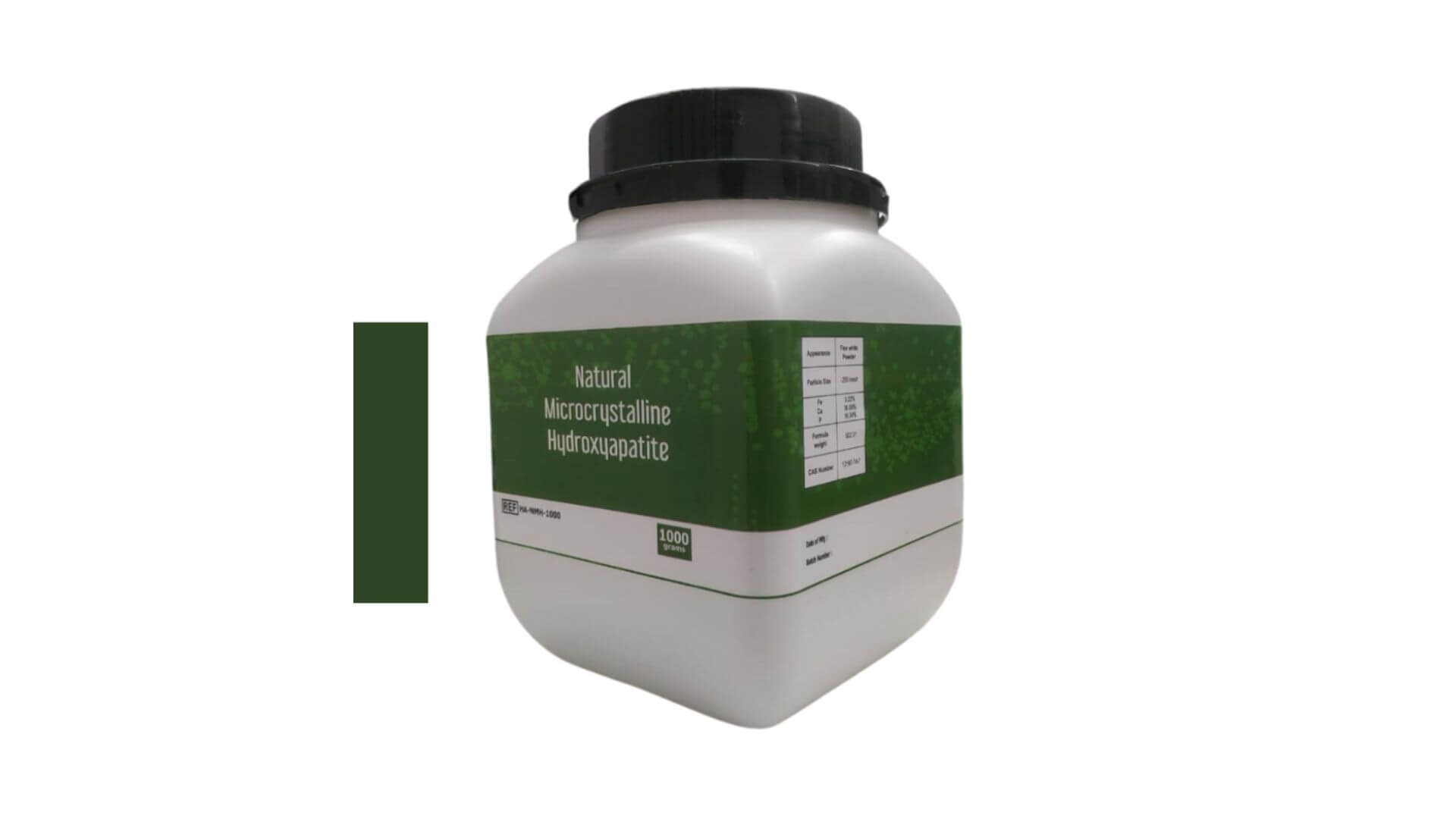How Calcium Hydroxyapatite Supports Strength
Calcium hydroxyapatite (Ca10(PO4)6(OH)2) is a naturally occurring mineral form of calcium apatite, and it is the primary structural component of bones and teeth in humans. It accounts for nearly 70% of the weight of bone and is a major contributor to the rigidity and strength of the skeletal system. Found predominantly in the cortical (compact) bone, calcium hydroxyapatite delivers both the mass and the structural integrity essential for skeletal stability and resilience.
Bone Density and Structural Strength
The strength of bones depends heavily on bone mineral density (BMD)—a metric that is directly related to the concentration of calcium hydroxyapatite in the bone matrix. The microstructure of hydroxyapatite crystals aligns with collagen fibers in a hierarchical composite, delivering a tough, yet lightweight framework that can withstand extreme mechanical forces.
As we age, BMD tends to decline, leading to osteopenia or osteoporosis. Supplementing with microcrystalline hydroxyapatite (MCHA) can help maintain optimal calcium levels in the body, supporting both bone density and structural resilience. Clinical studies indicate that MCHA is more bioavailable than many traditional calcium supplements, due to its similarity to the bone’s natural composition.
How Calcium Hydroxyapatite Promotes Cellular Function in Bones
Beyond just being a mineral scaffold, calcium hydroxyapatite plays a biochemical role in promoting cellular function. It facilitates the activity of osteoblasts (bone-forming cells) and inhibits osteoclasts (bone-resorbing cells). This dual action is vital for maintaining bone remodeling homeostasis, a continuous process that keeps bones strong and adaptive to mechanical stress.
The phosphate content in hydroxyapatite also helps maintain the acid-base balance in the body, influencing calcium ion release based on the pH environment, further supporting metabolic bone health.
Hydroxyapatite in Dental Health
Teeth are another structure rich in hydroxyapatite, especially in the enamel and dentin layers. This mineral provides teeth with their hardness and resistance to acid erosion. Modern dental products increasingly utilize nano-hydroxyapatite to remineralize enamel, fill microcracks, and treat tooth sensitivity. Unlike fluoride, which only strengthens the surface layer, hydroxyapatite integrates directly into the tooth structure, enhancing its natural resistance to decay and abrasion.
Bioavailability of Calcium Hydroxyapatite vs Other Forms
Not all calcium supplements are created equal. Calcium carbonate and calcium citrate are common forms, but they often fall short in bioavailability and tolerability. In contrast, calcium hydroxyapatite derived from bovine bone offers a full spectrum of minerals—including phosphorus, magnesium, and trace elements—alongside collagen and bone growth factors like IGF-1 and TGF-beta.
These additional nutrients mimic the natural composition of bone, enhancing the absorption and integration of calcium into skeletal tissue. Clinical studies have shown that hydroxyapatite outperforms traditional calcium supplements in preserving bone mass and preventing fractures in postmenopausal women.
Role in Joint and Connective Tissue Health
Though primarily recognized for its role in bones and teeth, calcium hydroxyapatite also supports joint health. The compound contributes to cartilage mineralization and maintains the mechanical properties of tendons and ligaments. By reinforcing the connective tissues, it reduces the risk of injury and promotes faster recovery after physical stress.
Additionally, the collagen matrix within hydroxyapatite supplements enhances joint lubrication, reducing pain and stiffness associated with osteoarthritis and other degenerative joint conditions.
Clinical Applications and Research Evidence
Multiple peer-reviewed studies underscore the efficacy of calcium hydroxyapatite in clinical settings. For instance:
- A 2007 study published in Osteoporosis International demonstrated that supplementation with MCHA significantly reduced vertebral fracture rates in postmenopausal women compared to calcium carbonate.
- Another trial indicated improved bone mineral content and mechanical strength in elderly subjects taking hydroxyapatite over 24 months.
- Nano-hydroxyapatite has also been shown to rebuild enamel structure, making it a preferred agent in modern dentistry for non-invasive tooth repair.
These findings highlight the multifunctional potential of hydroxyapatite in promoting skeletal, dental, and connective tissue integrity.
Calcium Hydroxyapatite and Sports Performance
Athletes and individuals involved in high-impact sports benefit significantly from hydroxyapatite supplementation. The constant physical stress exerted on bones and joints during intense physical activity requires superior skeletal resilience. By strengthening bone density and enhancing joint function, hydroxyapatite reduces the risk of stress fractures, joint dislocations, and tendon injuries.
Moreover, the bone-derived proteins in MCHA formulations support muscle attachment sites and accelerate recovery post-injury, making it a holistic supplement for performance and recovery.
Natural Sources and Supplementation Guidelines
Calcium hydroxyapatite is most commonly sourced from bovine bone, particularly from grass-fed cattle raised in pristine environments. When choosing a supplement, it is crucial to ensure cold-processing methods are used to preserve the structural integrity and bioavailability of the mineral complex.
Recommended dosages generally range from 500 mg to 1000 mg daily, depending on age, gender, and bone health status. It is often combined with vitamin D3, vitamin K2 (MK-7), magnesium, and boron to maximize bone formation and calcium utilization.
Safety and Long-Term Use
Hydroxyapatite is considered safe for long-term use, with minimal gastrointestinal side effects compared to traditional calcium salts. It also poses a lower risk of kidney stones, due to its balanced calcium-to-phosphorus ratio and whole-mineral matrix. This makes it a superior choice for individuals looking for sustained bone health support without complications.
Patients with renal insufficiency or those on calcium-restricted diets should consult healthcare professionals before supplementation, but for the general population, MCHA offers a safe, effective, and comprehensive option for maintaining skeletal strength and density.
Conclusion
Calcium hydroxyapatite stands at the forefront of bone health innovation. Its natural compatibility with human bone structure, superior absorption, and multifunctional benefits across the skeletal and dental systems make it an essential supplement for maintaining strength and mobility at any age. Whether for aging adults, athletes, or anyone interested in long-term musculoskeletal wellness, calcium hydroxyapatite delivers unmatched support in maintaining structural integrity, enhancing performance, and preventing degeneration.













